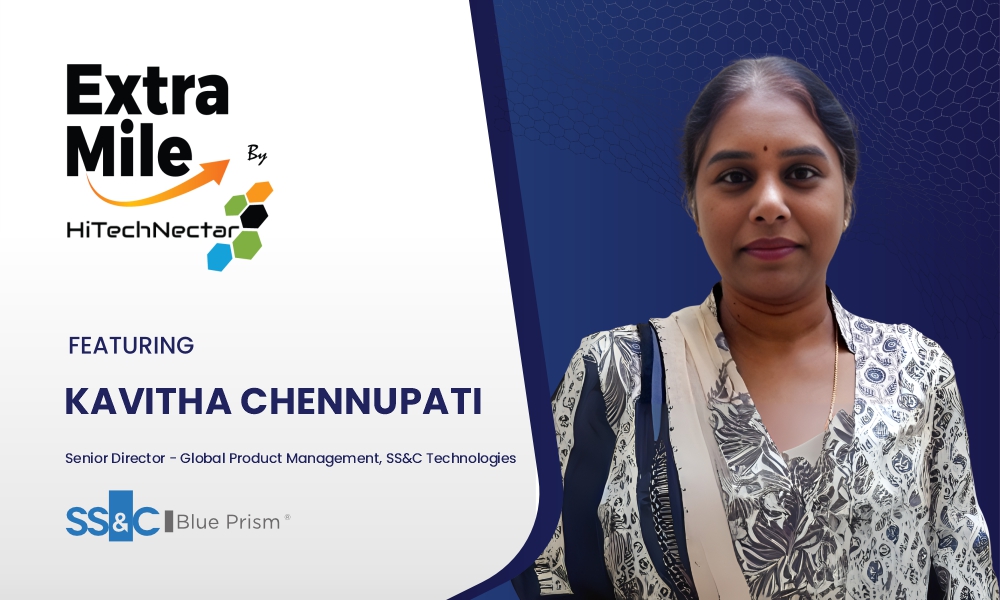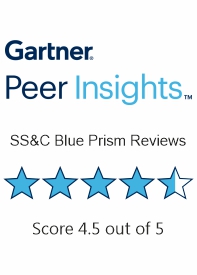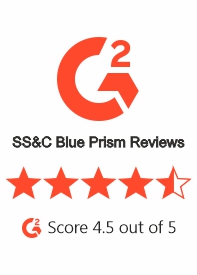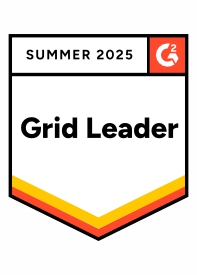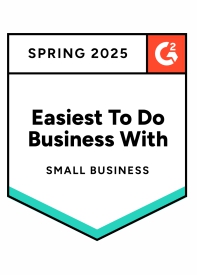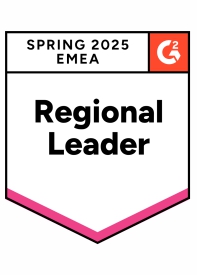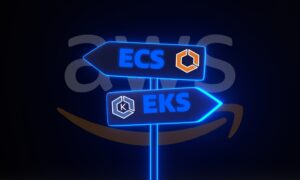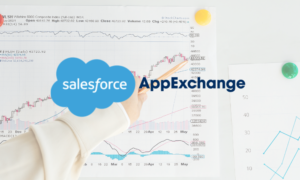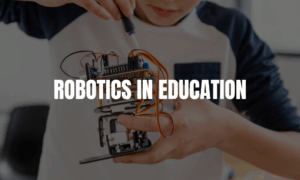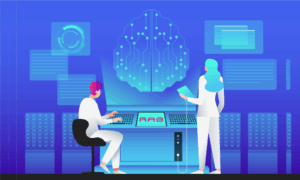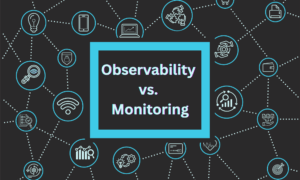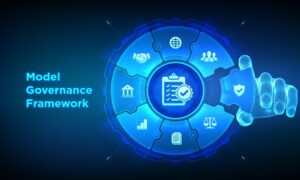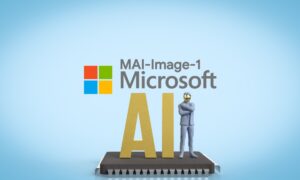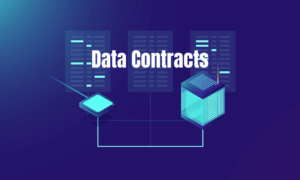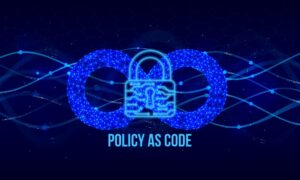Host: Hello everyone, and welcome back to another exciting episode of ExtraMile by HiTechNectar, where we bring you insightful conversations with industry leaders shaping the future of technology. I am your host Sayali, and we have an inspiring guest with us today. We are thrilled to welcome Kavitha Chennupati, Senior Director of Global Product Management at SS&C Technologies.
With over a decade at SS&C, Kavitha has played an important role in driving intelligent automation solutions, especially with the Blue Prism platform. Her expertise in AI-driven automation, low-code development, and scaling RPA makes this conversation a must-watch for anyone in the tech space. Kavitha, it’s an absolute pleasure to have you here today. How are you doing?
Kavitha: Very well, Sayali. Thank you very much for having me on your podcast.
Host: Thank you so much. So, Kavitha, you have spent over a decade at SS&C, evolving from software engineering to leading global product management. So, what important moments shaped your journey, and how has SS&C culture fueled your growth?
Kavitha: Yeah, it’s been about 22 years of journey in the industry, end-to-end, starting from academics, pre-sales, professional services, into software engineering, and now into the product management. So, each phase has been quite exciting for me and filled with learning and enriching experiences. One thing I learned from my previous company is to be the lifelong learner, forward-thinking, and most importantly, in getting there to where you dreamt to be.
And then I had a couple of reasons why I joined SS&C when I kind of chose to move from my previous company to here. One was the domain knowledge, and the second was the incredible way they do the project and program management. And, you know, we focus on meaningful outcomes for our clients in SS&C, and we are at a juncture right now where AI is reshaping the entire domain.
So, I mean, SS&C being a very bold company, which is willing to give people those opportunities to be successful. I’m looking forward to adding a few more chapters to my, you know, the career and the learning experiences. And all through my journey, I’ve been lucky to have so many wonderful mentors, leaders, and team members who shaped it.
Host: Thank you so much for sharing that. So, moving ahead, SS&C Blue Prism Platform is a leader in intelligent automation. So, as the owner of its IDP and AI solutions, how do you balance innovation with real-world business needs? Like, could you share some use cases where automation transformed a client’s operations?
Kavitha: I’m sure you imagine a lot of those incredible journeys that we have been through with the clients. I own the enterprise orchestration and IDP parts of my portfolio, and AI is an embedded part of the entire journey. I mean, as I noted in the previous response, there has been a paradigm shift in the way we are seeing automation shaping up with AI coming into picture much more rapidly.So, previously, when customers have started, they would have started their journey either with BPM or with RPA. I mean, like the customers who started their journey from top-down, like they started with the BPM, and then they started implementing task-level automations. Or there could have been companies which started with RPA, with task-level automations, and then they’re moving up the journey on the ladder to get the BPM automation in place.
Now, in either ways, what we have seen is that there is an amalgamation of technologies, multiple technologies coming together, BPM, RPA, IDP, AI, process intelligence, iPaaS. I mean, all these technologies are coming together into what is now known as intelligent automation plus, I would call it as. Analysts like Gartner have started calling it as BOT, business orchestration and automation technologies. It’s a suite of several technologies that are coming together to address the customer automation needs.
In terms of the claims and the use cases that we generally see, I mean, predominantly, we are an enterprise automation company, which involves an end-to-end automation journey at process level as well as the task-level automation. And most of the customers that we have spoken to and we’ve been involved with for the last 30 years as a product sometimes have been seeing an year-on-year growth of 20% value-add for their company with respect to products that we do.
I mean, imagine a company growing at a rate of 20%. They would only scale at that particular rate if the automation journey is able to match up to them. I would name a few clients who’ve been with us on this journey, like NBS, who is an employment benefits service provider.
They have about 20,000 employers that they serve, not employees, it’s employers. So they have multiple employees under them. They started with us about a decade back, and we’ve been their backbone for the work distribution and data and client implementations around transferring the data from one system to another system.
We have another client called Old Mutual, which is one of the oldest insurance providers, imagine 180 years in the industry for them, one of the oldest insurance providers in South Africa. And we help them in automating the death claims, funeral claims, and several other important elements as the orchestration backbone for their organization. And then we have our automation clients like AHS.
I mean, AHS saves annually about, sorry, not annually, their year-to-date saving is about $15.8 million due to automation. It’s a lifetime saving that they have achieved. And how did they do this?
I mean, you know about doctors and all those, you know, the handwriting that they have in terms of noting down the patient conditions and everything. So when a patient is visiting a doctor and the doctor notes down the conditions and recommends an MRI scan probably for the patient, right? So our automation has helped in reading those doctor notes, digitizing the doctor notes, relating the points to the checklist, which is forming whether or not a patient qualifies for MRI scans, and then recommends.
It’s saving incredible amount of specialist time that goes into this mundane activity. And that’s how we arrived at those $15.8 million of saving over a lifetime. We have companies like Friendly who are like, you know, using emails, email automation to save hours for their company.
Like about 300 hours of their staff time is being saved on a day-to-day basis. And then we have AJ Bell, who is another automation services consumer who is having an annual 51% of efficiency savings on their process automations, various processes that they’ve automated. Companies like State Street, like who are like, you know, kind of they’ve given back 187,000 days of work to the business due to automation.
So the list of use cases and the clients go by, I mean, you can only imagine for a company having 21,000 clients, you have a lot more stories to tell there. And the process user stories go from onboarding to new account management, redemptions, underwriting, a lot of them, appeals and grievances. So right from tiny task automations to very long running processes, like kind of one year plus kind of processes, sometimes we have a variety there.
Coming on to the next part of your question around innovation, like kind of, okay, so these are our day-to-day problems that we are dealing with, the processes that we are dealing with. How do we manage the innovation? I think the most important culture that is being built in SS&C and especially around Blue Prism is the ability to help our clients to be successful.
So that’s our central mode. So quite often, isn’t it the need which drives automation, right? So there are these customer needs that we have where we are very passionate about finding a solution and it often leads us to innovation.
And quite often, this entire journey for us begins with ourselves. We, SS&C, as customer zero for our own products, like we have over 2,000 digital workers that we are using within our own company. We learn a lot from our own digital workers and the usage of digital workers, right?
We have more than 2,000 plus processes that we have automated across various business units. So we learn from our own process automations and the number of documents which come through it. We have deployed around 45 agents within our own company of which we have moved 18 of them for public consumption on our own marketplace, right?
So we, as customer zero, learn a lot and that’s our bed of innovation is what I call us. And then over the last six months period, we have transformed ourselves as an agentic first company. So we started reimagining all our processes in the lens of agentic and how to make them more autonomous and independent.
So I believe that’s a part of our DNA and the work culture.
Host: Clearly, automation is a game changer. Adding on to what you said, the company serves 20,000 plus clients in finance and healthcare. So how does AI driven automation address unique challenges in the sector that is in risk analytics or patient data management?
Kavitha: Right. So, like I said, I mean, the use cases are numerous and risk analytics and patient management underwriting. There are several of these use cases where we address it.
But because you’ve asked about healthcare, let me touch upon a little bit about healthcare segment of our clients. I mean, we have an equally good number of financial services and healthcare segment. So we have a client called Select Health, which is in healthcare insurance providing business.
And they have used our software in order to process the claims 95% faster than what they were used to processing earlier. So basically, they got down the processing time from 60 days to three days time. So you can imagine the drastic amount of change that we went by and the kind of impact that we have generated.
For another insurance provider, we have reduced 75% in duplicates. I mean, I’m sure you understand, just to help our clients and audience understand a little better what it means by duplicates. Say, for example, there is an insurance claim that you want to raise.
There can be some fraud in some segments where a person can raise the same claim with multiple insurance providers that they have subscribed to. Say, for example, if I’m a customer and I’ve subscribed to two different insurance policies and I’ve undergone a healthcare expense, we can actually, I mean, I can potentially do some fraud by raising the claim to two different providers. So this is what we call duplicates.
Duplicates are very difficult to identify because these are with two different providers and we need to really understand the backbone to see what it is. So we have helped them in identifying 75% of duplicates, thereby saving that much of amount for the insurance care providers. So that’s a part of the fraud detection, I would say.
And for a non-profit healthcare plan, we have reduced the claim processing time and improved the efficiency. I mean, again, it’s again around claim processing capabilities. Internally within our own BPO, in our own, I mean, SS&C has two divisions.
There is a software division and the business process or sourcing division. We are roughly distributed around 50-50% in both the divisions. So kind of like we have 12,500 plus staff who are working in the processing division.
That’s our ground one for learning, I would say, right? So this division has about 2,000 human workers, human agents, and 500 digital agents who are processing claims and various work. We have processed about 41 million transactions in 2024 with over 6 million images.
So meaning those many pages which are going through the scanner. So the load of work that we have kind of been processing on our own systems is humongous.
Host: So the company acquired Blue Prism, Battea, and others to expand its automation portfolio. So how do these integrations enhance your product offerings? Like what gaps do they fill in the market?
Kavitha: Sure. SS&C is a huge company. So there are a lot of acquisitions that they do on a very, very regular basis. And each of their acquisitions is centrally aligned to the broader portfolio and complementary in nature.
That’s the fundamental thread that I have seen across the business units. Now, I can’t speak much about Battea. It’s not in our business unit.
But Blue Prism, yes, I can speak more about Blue Prism, about the acquisitions that we have had in Blue Prism, the Blue Prism acquisition that we have had. SS&C has acquired multiple products in the intelligent automation domain. The first product it has acquired is BPM. We call it as Chorus. And it brings, you know, kind of a very longstanding market leader product in the BPM space called as Chorus. And then it acquired IDP.
So there was a product called as Vedado that we have acquired. We rebranded it to document automation. And then the third product that we have acquired in that space is Blue Prism.
So as you can see, it’s BPM, IDP, RPA, right? So these are complementary technologies, and they add on to the capabilities. And SS&C has been successful in cross-selling these capabilities to its client base.
So we have several clients who are joint portfolio customers. Like kind of we have customers, you know, kind of in all three segments, including, I mean, I didn’t quote it, but we do have a BPPI product as well, process intelligence product as well, and an AI gateway product as well. So all these five different areas put together is our intelligent automation portfolio.
And each of these products are pretty complementary in nature. And all these are consolidated into one offering that we call as enterprise AI, which is the bigger portfolio that we have. So kind of in terms of the gaps that we fill into the market, we like, I mean, you can see it from the portfolio combinations itself.
So it is about the entire enterprise automation, not just focused on small bits and pockets of a departmental automation or, you know, a specific use case that we could do.
Host: As you mentioned, enterprises like often struggle with scaling automation. So from your experience, what are the top hurdles in adopting RPA and how does SS&C tackle them?
Kavitha: Sure. I would like to keep this a little broader than RPA. Sure, we are also an RPA player, but then the Blue Prism portfolio, as I mentioned, is much broader and we call it as enterprise AI. A fundamental thing that I have noticed throughout the client journeys over this 20 years is transformation is hard, especially when it is, you know, relating to the very fundamentals of the ways of working for you.
Which is what a process is all about, right? I mean, just imagine when you use the word process and associate it with any company, right? Say, for example, a bank. So there is a process for onboarding a new account. There is a process for transferring the amount in the check and so on, right? Like everything that a company does is a process.
It’s a culture, right? So you’re touching the very fundamentals of the culture of the company and the ways they work, basically. And it’s hard to change those kind of things.
So change management is a fundamental thing that we undertake. So as I was saying, change is fundamental and it’s very difficult to adapt to the change, especially when the ways of working are changing, right? So Blue Prism is not just about technology, but it is also about methodology.
And we have focused on both the things, you know, pretty much from very early on. So we have a methodology called Enterprise Operating Model, EOM, as we call it. And then we have the technology, which is the software, the tools, you know, click here, click there kind of a thing, right?
So that’s the first thing, the way in which we tackle these hurdles, right? It’s a philosophy as much as a technology, right? And the second thing is it’s a transformation journey.
So we spend time in terms of understanding what is the as-is process before we are trying to automate it to be a to-be process, right? So the entire capturing the value, identifying the right business case, articulating it back to the executives, getting the buy-in, showcasing the return on investment year on year, not just one time, is the second part of the important thing that we do. The third part that we have is the customer journey.
Like I said, we are customer zero for our products, right? Like we use our own products internally very much. So we take that experience to the client. So we say that, hey, we have seen this, these are the hurdles, and this is how we have overcome it. So it makes it a lot more easier to establish that trust between the product and the client and deliver that, of course. And one change that I have observed back from 20 years to now is earlier when we would approach a business team saying, hey, we are an automation product, we would draw a bit of scare.
I mean, like automation is going to take away my jobs, right? But now I see that there is a phenomenal shift where people are welcoming automation. So we have clients and business teams approaching us and asking us, hey, what can we do? How can we use AI in order to transform our businesses? How can AI help me in becoming more efficient? So that scare of automation is gone.
So I don’t think we have to work as much on the people factor as we were earlier. But again, you know, now it’s more about, okay, I have this technology, how do I, you know, say, for example, we have this agent technology coming in. So how can we help our clients and onboarding agents which can actually deliver work?
So the conversations have shifted into how efficient we can be rather than replacement stories.
Host: Absolutely. So moving ahead, SS&C emphasizes on ESG goals, that is Environmental Social Governance. So how does your team embed ethical AI and sustainability into product development, especially in data sensitive industries?
Kavitha: Absolutely. And that’s a very important point for us, having clients in, you know, financial services and healthcare domain, where the most sensitive information resides. So what does it mean by ethical AI?
Let’s reflect on that a little bit. It’s all about fair, transparent, accountable, being respectful to the privacy and minimizing the potential harms from AI or biases of AI. So that’s all what ethical AI means.
And, you know, for us, like I said, our journey started with SS&C internally as client zero. So the first question that we have asked ourselves is, OK, so when we are taking AI at scale, we’ve been using AI for several years now, a decade now, probably. So when we are scaling the usage of AI, the first question that we have asked ourselves is, what is it that we want to care for?
And the response is what we have implemented, which is governance first and AI next. So we have built our own governance platform. We call it as SS&C AI Gateway. It offers governance in usage of AI. Now, when I say governance, it’s a very broad term. It includes data privacy.
So it stops from sending PII information externally to a model or a system which you do not want to share. So it identifies and, you know, kind of helps you in abstracting that PII information. That’s one feature.
The other feature is prompt injection attack prevention. So in the garb of prompt, I can ask malicious questions if I’m trying to break a system. So we have features in our product which can identify and stop these malicious prompts, you know, the prompt injection guards.
We have language guards, kind of, you know, the kind of language which AI uses in communicating with the customer, either via an email or to an agent on a human agent who is on chat and so on. So we have invested a lot in AI Gateway and governance first approach, which is very central to our philosophy of protecting our client data and taking care of it. And we also have a private cloud, which we offer, meaning, you know, your data need not go to a public LLM where anything can happen in the transit.
So we have a private cloud offering, you know, for customers who are very, very specific about retaining the remit of their data, they can choose the private cloud options. And for clients who are using public cloud as well, we have secure tunneling of the data into the public cloud so that, you know, it’s being safeguarded. We also have this very exciting feature that we are going to launch pretty soon called as prompt operations.
So like how in age old computer philosophy, we used to say garbage in, garbage out, right? Like, so you give a good prompt, LLM gives you a good response. You give a bad prompt, LLM gives you a bad response.
So it’s the way you articulate your question to the LLM and the prompt to the LLM, which is significantly going to impact the output the LLM gives you. So prompt ops is all about managing that entire lifecycle of prompts, creating the prompts, testing them against various data sets. So you ensure that the bias does not creep in.
Establishing the right prompt by measuring the prompt efficacy against various models, choosing the right model and deploying that and publishing that into a marketplace where others in your company or you can even monetize it by selling it to external vendors. So these are the three things that we have done. We have the change management kind of governance based on EOM, Enterprise Operational Model.
The quantitative governance we have implemented through our governance first approach of SS&C AI gateway and the governance features implemented in it. And prompt ops, which is also part of SS&C gateway, will help you in managing and establishing that the AI that you’re developing is actually giving the right results against your test data set.
Host: So Kavitha, lastly, what is the next big thing in hyper automation? Like, is it composable architecture, generative AI or something else? And like, how can businesses get ready for it?
Kavitha: Sure. I mean, composable architecture is a software pattern and it’s always there. So we continue on that journey. It brought me a little smile on the face when you asked me, what’s the next big thing? Because there are so many changes in the industry in the last one and a half year. We just didn’t have an opportunity to settle down. First, it was NLP.
Then came Gen-AI and now Agentech. So we were constantly going through that huge innovation wave right now and we have not settled. I think the first thing that would happen next in intelligent automation or hyper automation is settling this entire agentic philosophy into the automation and promoting the adoption of agentic automation.
I think that’s the first thing which is going to happen. From a technology horizon perspective, we have seen this influx of LLM and various LLM models which we are able to use now. Now, as the name is indicating, it is a language model.
Like, kind of, it’s best at understanding the language. We are, to a certain extent, trying to retrofit the language models into decision modeling, into images, into other modalities as well. I think the next evolution is going to be the large multi-model models, which is not just able to understand languages, but it is able to understand text, voice, video, various modalities, as I was saying, of content.
And hence, can help us in better reasoning, better planning, and better execution of agents. There is also another stream which is evolving around large action models, which is about, you know, okay, it’s not about just language, but it’s about also what you do. So, if I go to a travel website, I mean, nobody has to teach you how to create a new login, right?
Nobody has to teach you how to register yourself as a new user. It is a skill that you have acquired. And those kind of skills are being learned by AI now. So, the common actions that you’re doing on websites is actually a skill that large models are acquiring, which is the evolution of LAMs. So, I believe the next part on this journey is going to be more around settling down, agentic, adapting to these newer models like LAMs and LMMs.
Host: Absolutely. Thank you so much, Kavitha, for sharing your invaluable insights today. Your journey at SS&C and your vision for the future automation have been incredibly inspiring. Once again, thank you so much for being part of this podcast.
Kavitha: And thank you for having me on the discussion. I really enjoyed it.
Host: Likewise. Thank you so much. Thank you so much, everyone, for joining us today. I am your host, Sayali, signing off.
See you soon in the next episode of ExtraMile by HiTechNectar with our next extraordinary leader on board, sharing their thoughts and knowledge. So, please stay tuned.
Explore Our Other Insightful Interviews:
